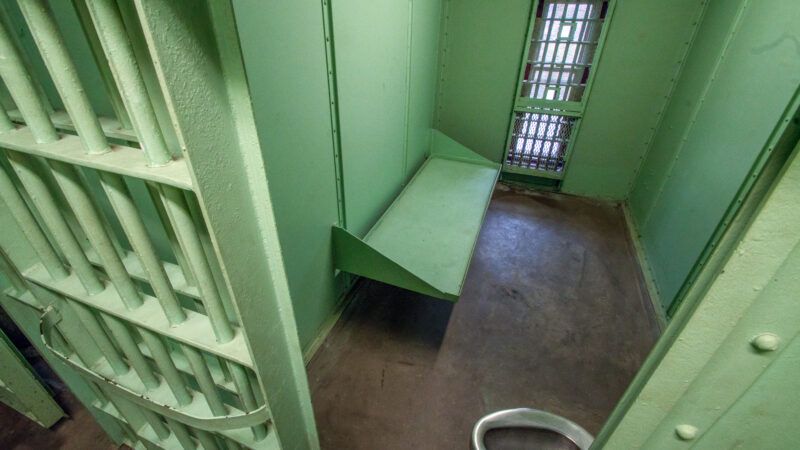Brickbat: That Takes Guts

The families of six people who died in Alabama prisons have sued the commissioner of the Alabama Department of Corrections, the University of Alabama System, and others, claiming their family members' bodies were returned to them after state-mandated autopsies with missing organs. The autopsies were performed at the University of Alabama at Birmingham.
Editor's Note: As of February 29, 2024, commenting privileges on reason.com posts are limited to Reason Plus subscribers. Past commenters are grandfathered in for a temporary period. Subscribe here to preserve your ability to comment. Your Reason Plus subscription also gives you an ad-free version of reason.com, along with full access to the digital edition and archives of Reason magazine. We request that comments be civil and on-topic. We do not moderate or assume any responsibility for comments, which are owned by the readers who post them. Comments do not represent the views of reason.com or Reason Foundation. We reserve the right to delete any comment and ban commenters for any reason at any time. Comments may only be edited within 5 minutes of posting. Report abuses.
Please to post comments




Look, no one is saying that Alabama is killing its prisoners to harvest their organs for wealthy political patrons...
They are building Frankenstein's monster!!!
(Let's do the Monster Mash!)
They fell off the back of a truck or sank in an unfortunate boating accident.
What proof is there that the organs were actually there prior to the autopsy?
Right! Were those organs inventoried at any point prior?! Those prisoners might very well have shown up without a spleen!
More likely they traded them for drugs - - - - - - - - -
This is why Mystery Meat Night at the Alabama Pen is so weird.
QI saves the day!
Removing abdominal organs before embalming is standard procedure.
1. No, they’re not. Cavity embalming (the step that deals with internal organs) involves embalming the organs in place. (For those interested in the gory details, see the "cavity embalming" section here.)
2. Coroners do not embalm their subjects after an autopsy. They rely on cold to inhibit decomposition until the body can be turned over to a funeral home (where the embalming happens).
That said, internal organs are routinely removed for inspection during an autopsy. Pretty much at the pathologist’s sole discretion, they may be retained for further inspection – which means the family loses. But even if not needed for further inspection, they can be incinerated instead of returned in most (maybe all?) jurisdictions – so the family loses again.
Which gets to 3 – if returned, the organs are sealed in plastic bags, making embalming of the organs irrelevant.
In any event, this all suggest shoddy record keeping at least, by the coroner.
Sue their asses for that, if nothing more.
I was an autopsy tech at a university hospital. Paid may way through college.. What happens in the autopsy suite will differ from what might happen in the funeral home if the body has not had an autopsy performed.
Standard autopsy: The brain is removed after cutting the scalp open ear to ear and sawing the cranium off, then sectioned (cut into 1/2 inch slices), from which samples are taken to make microscope slides). The guts removed from esophagus to rectum, sliced opened lengthwise to examine the interior. The heart, lungs, liver, spleen, kidneys, pancreas, and adrenals are removed, sliced through to examine the interior, and again more microscope slides.
These organs do not embalm well because they are no longer attached to the circulatory system, and to get formalin into those tissues they would have to be individually perfused. And sliced or cut up organs would only be able to be pickled by floating in a vat of formalin.
So like the ancient Egyptians preparing a mummy, the brain and chitlins of the abdomen are sent to the incinerator. Firmer organs might be placed back inside to be partially embalmed by the funeral home. Or maybe the funeral home would send them to the incinerator; but that is a separate thing to be explored.
So yeah, what you see at most funerals is literally the shell of a man.
The maxim of Alabaman Carcass Law is Corpus delecti non habeas